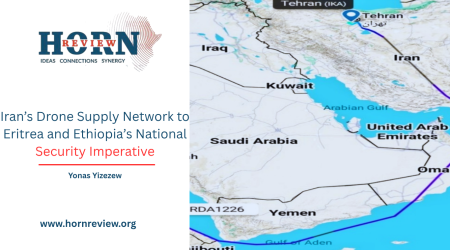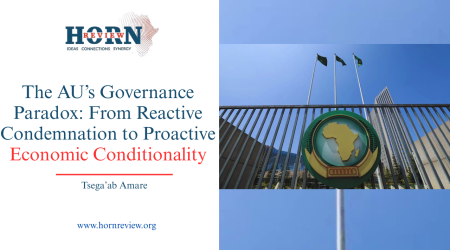
20
Nov
Mirror of Menace: As Hormuz Heats Up, Is Bab el-Mandeb Next?
Iran’s Islamic Revolutionary Guard Corps intercepted the Marshall Islands flagged tanker Talara in the Strait of Hormuz. The vessel carrying high sulphur gas oil from the United Arab Emirates to Singapore was forcibly diverted into Iranian territorial waters near Khor Fakkan in an operation involving three small IRGC vessels. This prominent, the first such interdiction in months within a waterway through which twenty percent of globally traded oil passes, meaning a consequential expansion in regional agitation.
The Talara’s operator, Cyprus based Columbia Ship Management reported losing contact with the vessel and expressed that the safety of the crew remains our foremost priority. A U.S. Navy MQ-4C Triton drone monitored the seizure for hours, while the British military’s United Kingdom Maritime Trade Operations center described the incident as a possible state activity that forced the tanker to alter course. What transforms this event from just maritime incident to a geopolitical statement is Iran’s deliberate messaging accompanying the action.
Tehran’s communication strategy surrounding the seizure provides critical insight into its motivations. The IRGC issued a formal statement on social media platform X, quoting a Quran verse “So whoever has assaulted you, then assault him in the same way that he has assaulted you”. This religious framing strongly suggests the action represents retaliation for a previous incident, positioning the seizure as a proportional response within Iran’s strategy.While Iranian authorities did not immediately specify which particular incident prompted this response, it might be a War have pointed to a potential connection with the MV Falcon, an LPG tanker that caught fire after an unexplained explosion near Aden, Yemen, on October 18. Reports indicate the Falcon was part of Iran’s shadow fleet transporting illicit Iranian oil, and Tehran may have interpreted its damage as an intentional attack requiring a demonstrative response.
Beyond immediate retaliation, the seizure serves as a demonstration of power to specific regional actors, particularly Azerbaijan and Saudi Arabia, both of which have recently taken steps that Tehran perceives as threatening alignment with Iranian adversaries. The tanker’s ownership has been linked to Pasha Finance, which allegedly has familial ties to Azerbaijani President Ilham Aliyev, making the target selection particularly meaningful.
This move coincides with Azerbaijan’s discussions with Israel throughout 2025 regarding bilateral cooperation and its potential inclusion in the Abraham Accords, the U.S.-brokered normalization agreements. Simultaneously, the timing appears well articulated to send a message to Saudi Arabia, whose Crown Prince Mohammed bin Salman reportedly plans to discuss a major defense agreement with the United States during an upcoming visit to Washington. By intercepting a vessel connected to Baku just as these diplomatic developments unfold, Iran physically manifests its displeasure and showcases its ability to disrupt regional trade and stability in response to such overtures.
The Talara seizure shows Iran’s willingness to leverage its geographic position at the Strait of Hormuz, the narrow mouth of the Persian Gulf through which a significant portion of global oil trade passes. Iranian officials explicitly warned in October 2025 that Tehran would close this waterway if the international community moves to block Iranian oil exports. This recent naval interdiction serves as a tangible preview of that threatened capability.
Iran’s actions in the Strait of Hormuz mirror the crisis thousands of miles away in the Bab el-Mandeb Strait, a similarly main point at the southern entrance to the Red Sea where Houthi forces backed by Iran, have sustained a relentless campaign against commercial shipping. Since November 2023, there have been more than one hundred separate Houthi attacks on commercial vessels affecting over sixty nations, drastically reducing shipping in this corridor.In a particularly severe escalation, Houthi forces attacked and sank two commercial vessels in the southern Red Sea in July 2025. This parallel is highly instructive, proving that a single coastal actor can project power and hold portions of world commerce hostage.
The Talara seizure fits a pattern of tit for tat retaliation that has characterized Iran’s maritime operations in recent years. The U.S. Navy has previously blamed Iran for a series of limpet mine attacks on vessels in 2019 and a fatal drone attack on an Israeli-linked oil tanker in 2021. The last major seizure prior to the Talara incident occurred in May 2022, when Iran took two Greek tankers and held them until November of that year .
The operation follows a familiar pattern where Tehran uses maritime aggression to signal displeasure while maintaining plausible deniability through ambiguous ownership structures and indirect claims of retaliation. The religious framing of the response, however, adds a new dimension to this established pattern, potentially strengthening domestic support for the action. Iran has significantly intensified its naval inspections and readiness demonstrations since the June 2025 conflict with Israel, during which U.S. forces struck Iranian nuclear sites. Senior Iranian military commanders have inspected naval facilities at least seven times between June and November 2025, with the most recent inspection occurring just three days before the Talara seizure. These inspections have served both to evaluate combat readiness and to publicly tout Iranian naval capabilities as a deterrent to adversaries.
These simultaneous challenges in two critical points highlight the vulnerability of global shipping to regional conflicts and the potential for hybrid maritime warfare. If the Trump administration is planning to focus on maximum pressure on Iran, it should be prepared for the potential consequences and maintain, or even expand, its regional presence. The interconnected nature of these maritime domains means that escalation in one colendrium often reverberates in the other. Iran’s seizure of the Talara tanker functions simultaneously as a potential act of retaliation, a demonstration of military readiness, and a clear warning to regional powers like Azerbaijan and Saudi Arabia against deepening ties with its adversaries. By replicating the disruptive tactics of its Houthi allies in the Bab el-Mandeb, Iran has reminded the world that its control over the Strait of Hormuz remains one of the most powerful levers in its foreign policy.
The incident displays Tehran’s willingness to leverage its geographic position to counter diplomatic isolation and security threats, demonstrating that the expansion of the Abraham Accords will not proceed without cost. As regional alignments continue to shift, the ability of Iran and its proxies to disrupt main maritime points ensures that the threat to global shipping remains a central feature of Middle Eastern geopolitics, with the potential to trigger a wider confrontation if underlying tensions remain unaddressed.
By Samiya Mohammed, Researcher, Horn Review










